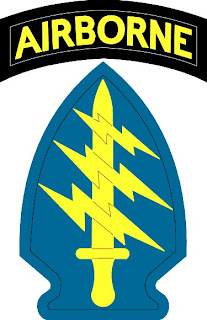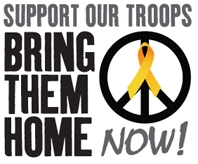Moscow-Richmond-Saigon-Kabul-Baghdad
No, this isn't exactly a travelog. It's a gloss on the principles of war and how these are necessary to win, and how we have ignored them in Iraq and Afghanistan. Following are a few examples of the failure that can result by straying from these principles.
In 1812, Napoleon forced his entry into Moscow. But the occupation of that city did not effect the defeat of the Czar's forces nor the subjugation of Russia to Napoleon's will. This failure was partly due to Napoleon's inability to properly gauge the nationalism and patriotism of the Russian people.
As well, the Russian army refused to join combat in any unfavorable situation. The guerillas that we are currently fighting are following this example; they will only fight at a place and time of their own choosing. As such, they control the pace of the battle.
In the U.S. Civil War, the South held Richmond, but they still lost the war. The Confederate folly of defending their symbolic capitol bled off maneuver forces sorely needed by the Army of North Virginia. For the South, defeating the U.S. maneuver armies should have trumped defending real estate.
In the Vietnam War, Saigon and all the provincial capitals were secured and kept safe from effective enemy combat operations, with the exception of Tet '68. However, the protection of Saigon did not address the communist insurgency nor the military power of the NVA. The protection of the capitals did not address the security issues of the countryside, which contained the majority of the population. Without a secure population, the viability of any government is in jeopardy.
The same can be seen in Kabul and Baghdad today. The only areas tenuously held and consistently administered by the governments are these capital cities. The combat assets in country are not sufficient to secure both the country and the capital. Both Afghanistan and Iraq share similarities in that the police and armies are not totally controlled by the central government. Militias, warlords, druglords and mullahs influence the makeup and operations of these entities.
This new paradigm of war must address the issue of rogue police and army operations. Not only are the civilians not safe from the guerillas, they are not safe from the federal government, either. A population whose focus is survival is less likely to rally around a new experimental government.
Defeating armies and destroying the adversary's will to fight are the key objectives of military operations. Defending terrain does not necessarily equate to victory.
The principles of war apply to both current situations
Coalition forces consistently react to the military threats posed by the opposition forces. Therefore, the opposition forces control the time and place of battle and subsequently, the pace of operations. We have lost offensive, and classic military doctrine recognizes that the offensive is required to win a war.
The coalition forces in battles like Fallujah can concentrate firepower and troops, achieve mass and initiate combat. But as the Confederate and VN experiences show, winning the terrain will not defeat the Iraqi guerillas, nor destroy their will to fight, since we are seen as an army of occupation.
The coalition forces continually fail to fix the guerillas. The infantry term is "find, fix and destroy," with fix meaning to maintain contact once initiated. Without fixing the target, firepower and mass are meaningless. Otherwise, he'll slip away, as he is wont to do. (Personally, I cannot see how Americans fail to grasp that we are an occupying army.)
The attitude and loyalties of the host nation citizens also affect success, as in Napoleon's case. Per recent surveys, the majority of both Sunni and Shia Iraqis and Afhanis agree that attacking and killing U.S. forces is acceptable. This indicates that the population is, at the least, providing passive support to the anti-coalition warriors.
It's ironic that the coalition forces believe that their mission in country is to introduce democracy, a concept in contradiction to their actions. Forced democratization is not in the best interests of any of the involved parties.
Above this, the U.S. President must be more concerned with the welfare of America than the regimes in Kabul and Baghdad. American policy must address the needs of the American taxpayer over the requirements of failed client states.
In 1812, Napoleon forced his entry into Moscow. But the occupation of that city did not effect the defeat of the Czar's forces nor the subjugation of Russia to Napoleon's will. This failure was partly due to Napoleon's inability to properly gauge the nationalism and patriotism of the Russian people.
As well, the Russian army refused to join combat in any unfavorable situation. The guerillas that we are currently fighting are following this example; they will only fight at a place and time of their own choosing. As such, they control the pace of the battle.
In the U.S. Civil War, the South held Richmond, but they still lost the war. The Confederate folly of defending their symbolic capitol bled off maneuver forces sorely needed by the Army of North Virginia. For the South, defeating the U.S. maneuver armies should have trumped defending real estate.
In the Vietnam War, Saigon and all the provincial capitals were secured and kept safe from effective enemy combat operations, with the exception of Tet '68. However, the protection of Saigon did not address the communist insurgency nor the military power of the NVA. The protection of the capitals did not address the security issues of the countryside, which contained the majority of the population. Without a secure population, the viability of any government is in jeopardy.
The same can be seen in Kabul and Baghdad today. The only areas tenuously held and consistently administered by the governments are these capital cities. The combat assets in country are not sufficient to secure both the country and the capital. Both Afghanistan and Iraq share similarities in that the police and armies are not totally controlled by the central government. Militias, warlords, druglords and mullahs influence the makeup and operations of these entities.
This new paradigm of war must address the issue of rogue police and army operations. Not only are the civilians not safe from the guerillas, they are not safe from the federal government, either. A population whose focus is survival is less likely to rally around a new experimental government.
Defeating armies and destroying the adversary's will to fight are the key objectives of military operations. Defending terrain does not necessarily equate to victory.
The principles of war apply to both current situations
Coalition forces consistently react to the military threats posed by the opposition forces. Therefore, the opposition forces control the time and place of battle and subsequently, the pace of operations. We have lost offensive, and classic military doctrine recognizes that the offensive is required to win a war.
The coalition forces in battles like Fallujah can concentrate firepower and troops, achieve mass and initiate combat. But as the Confederate and VN experiences show, winning the terrain will not defeat the Iraqi guerillas, nor destroy their will to fight, since we are seen as an army of occupation.
The coalition forces continually fail to fix the guerillas. The infantry term is "find, fix and destroy," with fix meaning to maintain contact once initiated. Without fixing the target, firepower and mass are meaningless. Otherwise, he'll slip away, as he is wont to do. (Personally, I cannot see how Americans fail to grasp that we are an occupying army.)
The attitude and loyalties of the host nation citizens also affect success, as in Napoleon's case. Per recent surveys, the majority of both Sunni and Shia Iraqis and Afhanis agree that attacking and killing U.S. forces is acceptable. This indicates that the population is, at the least, providing passive support to the anti-coalition warriors.
It's ironic that the coalition forces believe that their mission in country is to introduce democracy, a concept in contradiction to their actions. Forced democratization is not in the best interests of any of the involved parties.
Above this, the U.S. President must be more concerned with the welfare of America than the regimes in Kabul and Baghdad. American policy must address the needs of the American taxpayer over the requirements of failed client states.











2 Comments:
Good Stuff, Ranger.
I discovered your site via a post by Lisa over at Main and Central - hosted by the honorable Mr. Lurch.
A few years ago, Donald Rumsfeld was about to make his first appearance on Tim Russert's "Meet the Press" since the invasion of Iraq. I sent Russert the following analysis regarding the potential size of the insurgency. This is a question (one of many) that Rumsfeld wouldn't answer straight up.
You have a population of 28 million in Iraq. Half are men (I know woman can fight too, but this keeps it simple). Out of the 14 mln men, 35% are Sunni. This leaves 4.9 mln. Assuming two thirds are too old, too young, too sick to be considered an "able bodied" combantant - you have one third or 1.6 mln left.
If just one out of every ten potential combantant decides to fight - you have 160,000 guerillas. Given the fact that Iraq has the "trifecta" for insurgent motivation (religion, nationalism, anti-West/ anti U.S. sentiments) - this seems possible.
I wanted him to ask Rumsfeld if the insurgency could be much more than "a few thousand." I wanted Rumsfeld to say this logic is wrong - prove why it is wrong.
Of course, Tim didn't bother to ask.
But even half that number is a big problem.
I wrote this the summer of 2003 - so I did not even think to inculde the Shiites.
So even if I was off by a factor of "4" with the Sunnis, you have 40,000. I could be off by a factor of "8" and still come up with at least 40,000 Shiites.
Potentially 80,000 combined.
Anyway, just wondering what your thoughts are regarding the actual size of the insurgency.
Thanks for taking the time to "blog." Your insights are appreciated.
Dear KW,
British intelligence estimates the al-Mahdi army alone at 300,000. U.S. intel places the number much lower.
To be a guerilla, one need not measure up to the standards of a western combat soldier. They do not need as many shooters to be effective. Remember that those organizations have active and passive support, as well as active shooters. I would est. these numbers of active and passive at 75% of the population. The other 25% are sitting on the fence to see which way the wind blows.
It's interesting that historically the U.S. Army has taught that we must kill 10:1 to be successful in an insurgency (if you read my stuff, you'll see that I don't believe it is an insurgency, but rather, a guerilla war.) This ratio applies to either type of war. Using the Army's figures, by now we should have killed 30,000 bad guys. Have we done so?
My worst case scenario is that Iran will activate their sleeper agents within Iraq, and encourage or authorize the Iranian-funded militias to uprise. If this is done concurrently with a Sunni push, the U.S. forces will be in a tight.
Thank you for writing to and reading the site. I also salute your efforts to apply logic to this problem. Too bad the Nationsl Command Authority doesn't follow your lead. --Jim
Post a Comment
<< Home